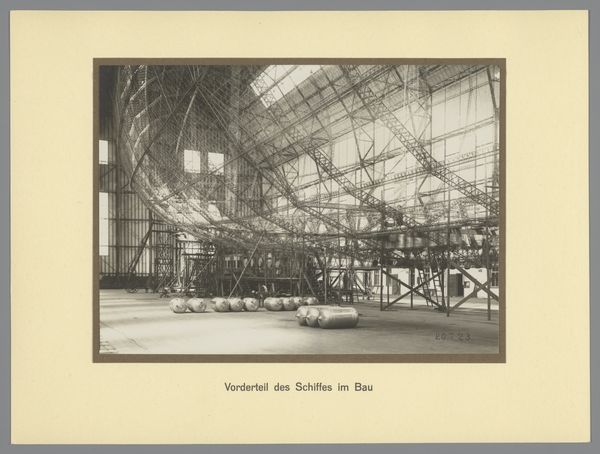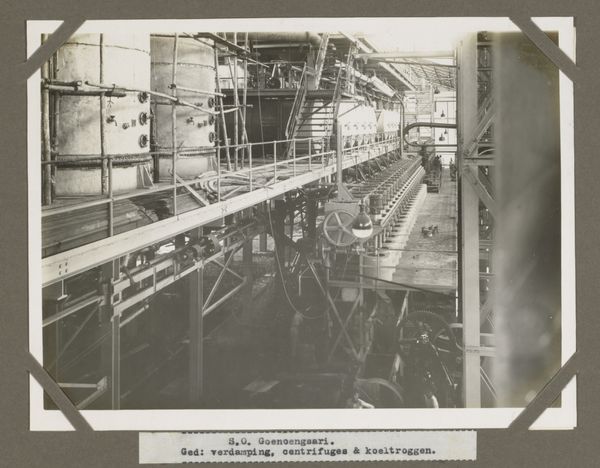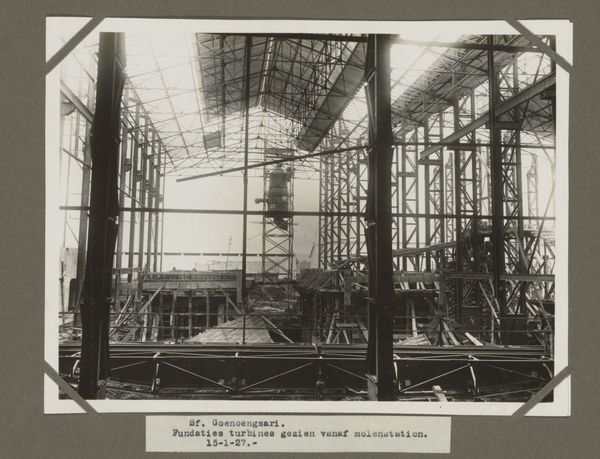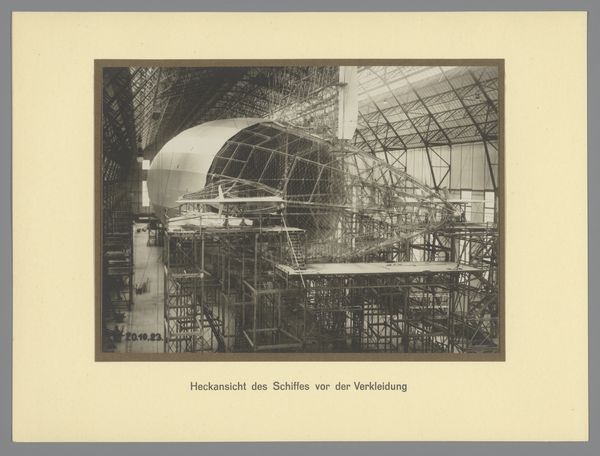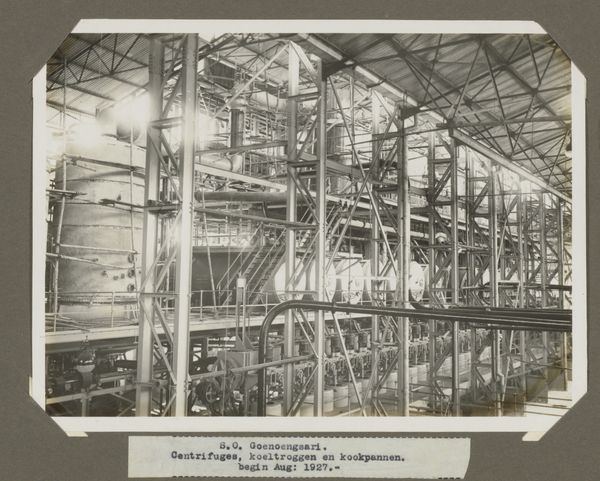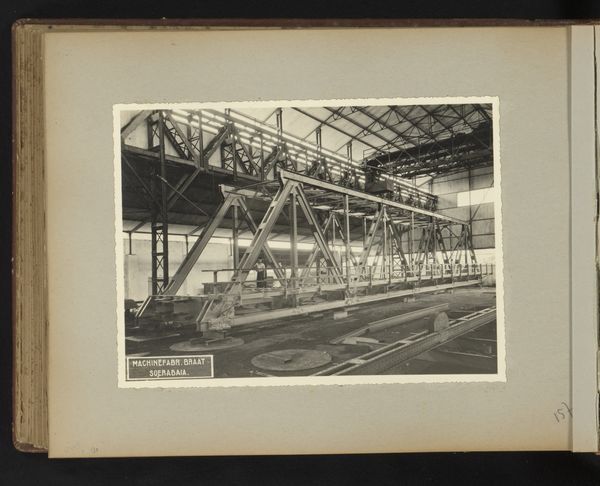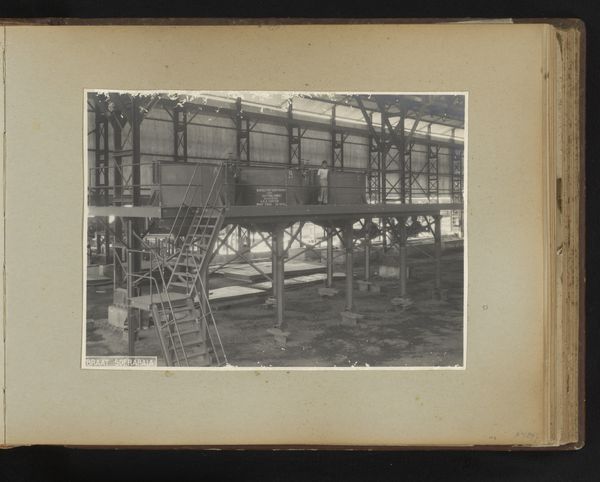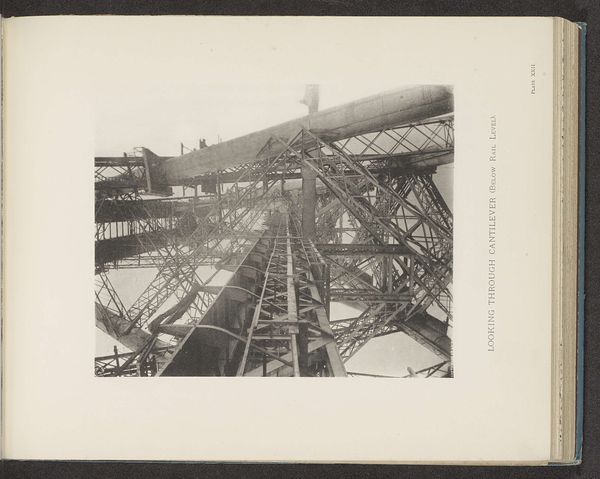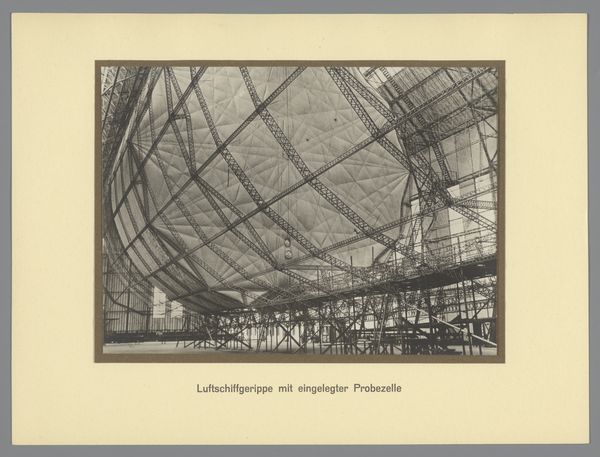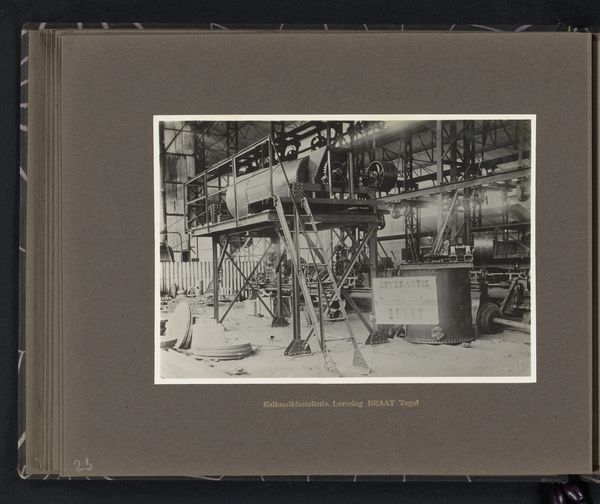
print, photography
#
precisionism
# print
#
photography
#
realism
#
monochrome
Dimensions: height 160 mm, width 220 mm, height 240 mm, width 320 mm
Copyright: Rijks Museum: Open Domain
Curator: I find this 1924 print titled "Brandstoftanks in de zeppelin" quite striking; its almost eerie composition arrests the viewer immediately. Editor: It does have an unsettling, industrial grandeur, doesn't it? The rows of tanks receding into the distance create a compelling visual rhythm. What specifically stands out for you, formally? Curator: Well, the stark monochrome palette undeniably heightens the sense of foreboding, the limited tonal range emphasizing the geometry. What I find particularly captivating, though, is how this precisionist piece exposes the very sinews of production. We see the framework supporting these fuel tanks. Editor: I concur with you on the stark tones that contribute greatly to the overall solemnity and emphasis on industrial form, but is there anything about the means of production or the labor involved that stands out to you? Curator: Most definitely. Looking at those riveted tanks suspended in this skeletal framework, one can't help but consider the vast workforce involved in constructing these behemoths, the specific class dynamics, especially considering this era. There's an unavoidable acknowledgment of humanity's relationship with technology in this artwork. It’s there—even if subtly presented. Editor: It's hard not to see in its architecture of repeating cylindrical forms a comment on the industrial standardization dominating that period in European history. We could go as far as to state how the very concept of aviation and mechanized flight reconfigured man's idea of space and time itself! I agree the human relationship with machines is worth further exploration in the viewer’s mind. Curator: I believe you’re absolutely right about standardization. It's so meticulously crafted. It compels the audience to reflect upon the labor embedded within what seems like a simple photograph. Also, in terms of content, we could certainly mention how those are the fuel tanks for a zeppelin in times of increasing tension throughout Europe; its position within the zeitgeist cannot be understated. Editor: Indeed, both its realism and technical approach underscore broader anxieties and hopes of the age, doesn't it? Curator: Precisely. We're left contemplating not just aesthetic choices, but the intricate network of social forces shaping both artistic output and technological advancements. Editor: It has been a unique look into “Brandstoftanks in de zeppelin" offering valuable insights to its compelling nature.
Comments
No comments
Be the first to comment and join the conversation on the ultimate creative platform.

